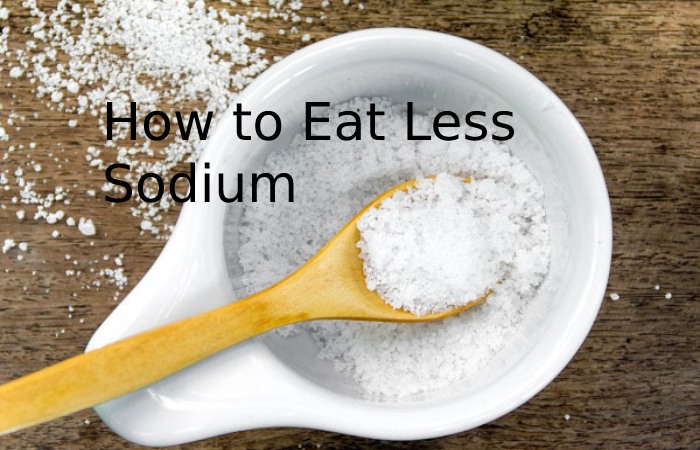Eat Less Sodium Nine in ten people in the Joint States consume much more Sodium (salt) than they need. Too much Sodium increases the risk of health problems, such as high blood pressure. Follow these tips to reduce the Sodium you consume in your diet.

Table of Contents
Know-How Much Sodium You Can Eat
Inquire your doctor about how much Sodium you can eat. The general recommendations are:
Adolescents over 14 and healthy adults should limit their sodium intake to no more than 2300 mg per day (about one teaspoon of salt).
Some adults, including those with high blood pressure, should limit their sodium intake to 1500 mg per day.
Children only need 1,500 to 2,200 mg of Sodium per day, depending on their age.
To eat less Sodium, you don’t need to make multiple changes at once. If you slowly decrease the Sodium you put in your food, your taste for salt will change over time.
Check the Food Labels
Check the Nutrition Proofs label on foods to see how much Sodium they contain. Try to choose products with 5% or less of the Recommended Daily Value (DV) for Sodium. If a food contains 20% or more of the Recommended Daily Value for Sodium, it has a large salt.
Look for foods that are low in Sodium (low Sodium), low in Sodium (reduced Sodium), or no salt added (no salt added).
Buy Foods that are low in Sodium
Buy lots of vegetables, fruits, beans, and peas because they are low in Sodium. You can buy them fresh, cold or dried.
When shopping for canned foods (like vegetables, beans, or fish), look for low Sodium, reduced Sodium, or no added salt on the label.
Compare the amount of Sodium in prepared foods, such as bread, soups, and frozen meals. Choose those that contain the least Sodium.
Limit your intake of processed meats, especially cured, smoked, or cured meats, such as hot dogs, bacon, or cold cuts.
Prepare Meals with Less Sodium
- If you buy canned foods that are not low in Sodium, rinse them before eating to remove some salt.
- Use unsalted margarine or semi-solid spreads that are trans-fat-free.
- Do not add salt to the water once preparing pasta or rice.
- Season foods with herbs and spices, such as ginger or garlic.
- Remove the salt shaker from the table.
- Eat less salt when eating out.
- When ordering food at a restaurant, ask for no extra salt.
- Choose foods low in Sodium when possible, such as steamed, broiled, or roasted.
- Add more potassium to your diet.
Eating more foods that contain potassium will help lower your blood pressure. Potatoes, melons, bananas, beans, milk, and yogurt are good sources of potassium.
High Points
Consuming too much salt may seem harmless, but it’s associated with several health risks that cause millions of premature deaths each year. The most common of these risks remain high blood pressure, responsible for around 9.4 million deaths per year.
Try to eat a smaller amount than 5 grams of salt or 2,000 milligrams of Sodium per day; in the Americas, people eat up to three times that amount, and all age groups, including children, are affected.
The straight and indirect costs of increased blood pressure are estimated to consume 5% and 15% of GDP in high-income countries and between 2.5% and 8% in Latin America and the Caribbean.
Recommendations for Reducing Salt Intake
For adults: The WHO recommends consuming less than 5 grams (just under a teaspoon) of salt per day (1).
And children: The WHO recommends adjusting downwards; for children from 2 to 15 years old, the maximum recommended intakes for adults according to energy needs compared to adults. This recommendation does not include the period of exclusive breastfeeding (from 0 to 6 months) nor the complementary feeding of breastfeeding (from 6 to 24 months).
All salt consume must iodized, “fortified” with iodine, which is essential for healthy brain development in fetuses and young children and general optimization of mental functions.
Some notions about salt, Sodium, and potassium
Na is an essential nutrient needed by the hand
